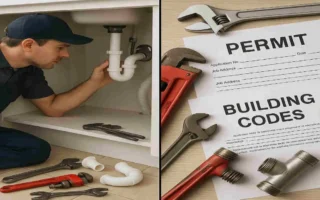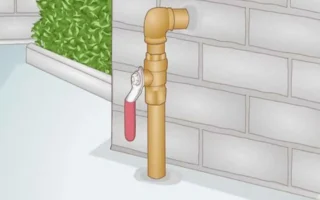Hey there, fellow plumber or aspiring contractor! If you’re in the home plumbing game, you know that landing jobs isn’t just about fixing leaks—it’s about outsmarting the competition. In a world where homeowners are bombarded with options, mastering how to bid on home plumbing jobs can make or break your business. Think about it: a killer bid doesn’t just win the gig; it builds trust, boosts your profits, and turns one-time clients into loyal fans.
We’ll dive deep into the nuts and bolts of bidding. You’ll learn why competitive bidding matters, how to prepare like a pro, and tips to avoid those costly slip-ups. By the end, you’ll feel confident tackling your next bid. Ready to level up? Let’s get started.
Understanding the Home Plumbing Job Market

The home plumbing industry is booming, and for good reason. Homeowners are constantly dealing with something—whether it’s a dripping faucet or a complete bathroom remodel. But with so much demand comes fierce competition. Local plumbers, big chains, and even DIY enthusiasts are all vying for the same jobs. That’s why knowing how to bid on home plumbing jobs effectively sets you apart.
The Rising Demand for Residential Plumbing Services
Picture this: More people are buying older homes that need updates, and eco-friendly upgrades like low-flow toilets are all the rage. According to industry reports, the U.S. plumbing market is expected to grow by over 5% annually through 2025. This means more opportunities for you, but only if your bids hit the mark.
Demand spikes in certain seasons, too. Winter brings frozen pipes, while summer means sprinkler system installs. As a plumber, you need to stay ahead of these trends. Ask yourself: What local issues are homeowners facing right now? Flood-prone areas might need sump pump installations, while drought-hit areas might crave water-saving fixtures.
Common Types of Home Plumbing Jobs
Not all plumbing jobs are created equal. Repairs are the bread and butter—like unclogging drains or fixing burst pipes. These are quick wins but require fast, accurate bids to keep clients happy.
Then there are installations, such as setting up new sinks or water heaters. Upgrades? Think smart home integrations or energy-efficient systems. Each type demands a tailored bidding strategy. For instance, a simple repair might focus on speed, while an upgrade bid should highlight long-term home savings.
Why Accurate Bidding is Key to Success
Imagine underbidding and losing money on materials, or overbidding and scaring off a potential client. Accurate bidding ensures you win contracts without eating into profits. It also builds trust—homeowners want reliability, not surprises.
Profits aside, a solid bid shows professionalism. It tells clients you’re experienced and thoughtful. In a competitive market, this can lead to repeat business and glowing reviews. So, reader, take a moment: How often do your bids reflect actual costs? Mastering this skill could double your win house rate.
Preparing to Bid on Home Plumbing Jobs

Before you even think about numbers, preparation is your secret weapon. Rushing into a bid without the whole picture is like home plumbing without tools—messy and ineffective. Let’s break down how to gather intel and set yourself up for success when learning how to bid on home plumbing jobs.
Gathering Essential Project Information
Start by chatting with the client. What exactly do they need? Is it a leaky pipe or a complete kitchen redo? Dig into details: What’s the home’s age? Any existing issues? Local building codes can vary, so factor those in early.
Don’t forget the client’s needs. Some want eco-friendly home options; others prioritize budget. Ask questions to uncover these gems. This info shapes your bid and shows you care.
The Power of Site Visits and Assessments
Never skip the site visit—it’s non-negotiable. Walking the property lets you spot hidden problems, like outdated piping behind walls. Measure everything accurately to avoid surprises.
During the visit, take notes and photos. Assess access points—will you need to dig up the yard? This thoroughness prevents costly revisions later. Reader, have you ever lost a job because of an overlooked detail? A solid assessment turns potential pitfalls into winning house strategies.
Calculating Costs: Materials, Labor, and More
Now, crunch the numbers. List out materials—pipes, fittings, tools. Get quotes from suppliers for accuracy. Labor? Estimate hours based on your team’s speed and the job’s complexity.
Add permits, which can run $50–$500 depending on your outdoor area. Don’t forget contingencies for unexpected issues, like discovering mold. Overhead costs, such as insurance and travel, should be baked in too.
Tools and Software for Smarter Bidding
Tech makes this easier. Use apps like Jobber or Housecall Pro for estimates. They track costs and generate bids quickly.
Spreadsheets work for starters—plug in formulas for auto-calculations. Advanced software even integrates with suppliers for real-time pricing. These tools save time and reduce errors, helping you bid confidently.
How to Calculate an Accurate and Competitive Bid
Alright, let’s get to the heart of bidding on home plumbing guide the calculation. It’s not rocket science, but it requires precision. Follow these steps, and you’ll price jobs that win without cutting corners.
Step-by-Step Pricing Process
First, outline the scope. Break the job into tasks: demolition, installation, and cleanup. Assign time to each.
Next, tally materials. Research current prices—copper pipes might cost $5 per foot. Labor? If your rate is $80/hour and it takes 10 hours, that’s $800.
Factor in overhead (10–20% of total) and profit margin (15–25%). Add it all up for your base bid.
Breaking Down Costs Clearly
Materials are straightforward, but labor hours can trip you up. Use past jobs as benchmarks—a standard toilet Install might take 4 hours.
Overhead includes your truck, tools, and admin time. Profit keeps your business growing. Aim for balance: Competitive yet sustainable.
Here’s a simple table to visualize a cost breakdown for a sample bathroom remodel job Estimated Amount Details
Materials $1,200 Pipes, fixtures, sealants—sourced from local suppliers.
Labor $1,600 20 hours at $80/hour for two plumbers.
Permits & Fees $300 City permits and inspection costs.
Overhead $500 Insurance, travel, tools, depreciation (20% of total).
Contingencies: $400 Buffer for surprises like hidden leaks (10% of total).
Profit Margin $700 15% markup to ensure business growth.
Total Bid: $4,700. Final competitive price presented to the client.
This table keeps things transparent, plumbing fixtures—use something similar in your bids.
Tips for Competitive Pricing
Price to win, but don’t lowball. Research competitors’ rates in your area. Offer tiers: Basic vs. Premium options.
Build in flexibility for negotiations—maybe a discount for prompt payment. This keeps you profitable while appealing to budget-conscious homeowners.
Negotiation Flexibility in Bids
Always leave room to haggle. If a client pushes back, suggest value adds like a free inspection. This turns “no” into “yes” without slashing profits.
Remember, reader, negotiations build relationships. Approach them confidently—you know your worth.
Writing a Winning Bid Proposal

You’ve got the numbers; now blockage them persuasively. An excellent proposal isn’t just a quote—it’s your sales pitch. Let’s explore how to craft one that seals the deal in bidding on home plumbing jobs.
Essential Components of a Bid Proposal
Start with a cover letter: Introduce yourself and summarize the job. Follow up with a detailed estimate, breaking down costs as in our table above.
Include a timeline—e.g., “Project starts Monday, finishes by Friday.” End with terms, like payment schedules.
Presenting Your Bid Persuasively
Keep it clear: Use simple language and bold key figures. Explain why your bid is best—highlight your experience or eco-materials.
Make it visual: Add charts or photos of similar work. This engages homeowners who aren’t plumbing experts.
Building Trust with Warranties and References
Offer guarantees, like a 1-year warranty on installations. Include client references or testimonials.
Transparency shines here—disclose any assumptions, like “Bid assumes no structural issues.” This fosters trust.
The Role of Clear Communication
Follow up after sending the proposal. A quick call can clarify doubts. Good communication turns bids into contracts.
Reader, think about your last proposal: Was it crystal cleaning? Polish this skill, and watch your win rate soar.
Common Mistakes to Avoid When Bidding on Plumbing Jobs
Even pros slip up. Avoiding these pitfalls is crucial in mastering how to bid on home plumbing jobs. Let’s spotlight the big ones.
Underestimating Costs and Time
Rushing leads to lowballing. You forget contingencies, and bam—profits vanish. Always double-check estimates.
Overpriced Bids That Scare Clients
High bids scream “overkill.” Compare to market rates; adjust if needed. Value perception matters.
Ignoring Local Regulations
Skip permits, and fines hit hard. Research codes upfront—it’s non-negotiable.
Poor Communication and Follow-Up
Vague proposals confuse clients. No follow-up? They move on. Stay proactive.
Here’s a quick bullet-point list of key tips to dodge these mistakes:
- Double-review estimates: Catch errors before submitting.
- Research competitors: Keep bids realistic.
- Document everything: Include all fees in writing.
- Follow up promptly: A simple email can win the job.
Building Relationships to Win Repeat and Referral Business
Winning one job is great; building loyalty is gold. Use bids as a stepping stone for long-term success in bidding on home plumbing tips.
Bids as a Foundation for Trust
A fair, detailed bid shows reliability. Deliver on it, and clients remember.
Offering Value-Added Services
Sweeten deals with extras like maintenance plans or flexible payments. This encourages repetition.
Asking for Testimonials and Referrals
After completion, request reviews. “Hey, mind sharing your experience?” It fuels referrals.
Using CRM Tools for Tracking
Tools like HubSpot track bids and preferences. Personalize future offers—clients love that.
Reader, how’s your follow-up game? Strengthen relationships, and jobs will come to you.
Leveraging Technology and Marketing to Enhance Your Bid Success

Tech isn’t just for estimates—it’s your marketing edge. Boost visibility and credibility when bidding on home plumbing features.
Digital Tools for Bid Management
Apps streamline everything from quoting to invoicing. Engage clients via email automation.




